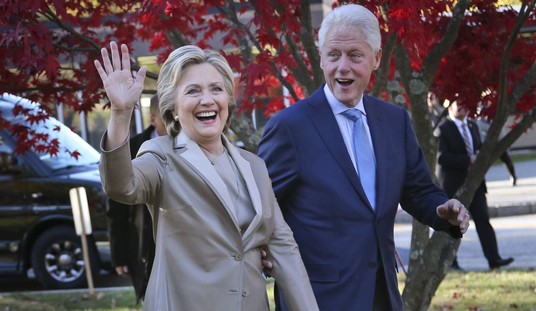It’s been clear enough to everyone with eyes that the most visible effect of the Fed’s QE2 program would be to inflate the stock market, and possibly (because of the weaker dollar) commodities too.
A view is starting to emerge that this is what Bernanke actually had in mind. Creating a huge amount of new "bank money" obviously did nothing to stimulate the creation of "economy money," and I suspect this came as something of a surprise to Bernanke.
So the idea with QE2 is to actually create "economy money" by bidding up midcurve Treasury paper well past its current value. (If that reminds you of what Fannie and Freddie do with mortgages, give yourself a gold star.)
It’s remarkable that the Fed’s total Treasury-debt purchase plan ($600bn over six months) amounts to more of this paper than is currently outstanding. If they succeed, you can probably expect to see a drastic change in the shape of the yield curve. Think of dropping a bowling ball on it, just left of the center line.
And that metaphor understates the steepening at the long end. Since the Fed doesn’t anticipate buying in the 30-year bond, that maturity has taken it on the chin, rising in yield by nearly 20 basis points over the past two days. (Yields have risen across the curve today with the better-than-expected unemployment report.)
What’s supposed to happen? You, the investing public, are supposed to reason that there’s just no point in holding overpriced risk-free paper, and stampede into the stock market. The resulting bubbling-up of stock prices is supposed to make you feel richer and happier, and in turn induce you to buy more fine consumer goods imported from China.
Never mind that nothing in that theory says that you’ll go to the US stock markets to invest what has now been effectively converted to risk capital. Lots of other markets are potentially more attractive on fundamentals than US stocks. That’s why everyone from Thailand to Brazil, including even Germany, is starting to talk about capital controls.
They’re worried that yield-obsessed Americans will pour Bernanke Dollars into their economies, fueling inflation, asset bubbles, and the kinds of instabilities that, in extreme form, led to the 1997 Asian Flu crisis that tore apart the economies of South Korea, Thailand, and several others.
Have you heard some of the loonier proposals from hotshot economists trying to understand why the private sector economy has become so risk averse? I’ve even heard people talking about a "balance sheet tax," which would take away some percentage of the cash that businesses hold every year. The idea is that you’re supposed to spend it rather than hold it.
But nothing could be more counterproductive. Businesses and individuals aren’t being irrational in their fear of overspending and overinvesting. If policymakers force them to take more risk than is warranted under current conditions, they’ll find other ways to reduce risk, possibly by liquidating assets. That would be an incredible disaster.
But QE2 is, in a way, a form of the same strategy. The Fed hopes to increase risk-taking not in the correct way, by increasing the real risk-adjusted returns on risk; but in the incorrect way, by taking away the tools that people use to manage risk today. They’re not going to succeed.
So keep in mind that the US stock market bubble that now seems likely for next year will not be based on fundamentals. If you buy it, stay near the exit. And hope that you don’t get run down by the millions of other people standing near the exit, when the bubble bursts.












Join the conversation as a VIP Member